Munich – Day 7
Saturday, 13-Apr-2024
Tags: Travel
There is a Jewish Regensburg, with history going back to the 9th century, with expulsion in 1519, return in the late 18th century, death and destruction during WWII, and the present day Jewish community. Visitors can learn about and go to locations using a booklet available at tourist information. Present day there is a pretty good size Jewish community, many USSR emigres among them, and a beautiful synagogue built in 2019. We were graciously allowed in, hearing Adon Olam as we entered, talked to the Rabbi (who was Swiss), and sat for a while at their large (herring, lox, fruit, challah, etc) kiddush lunch after their morning service.
Synaogogue exterior and interior
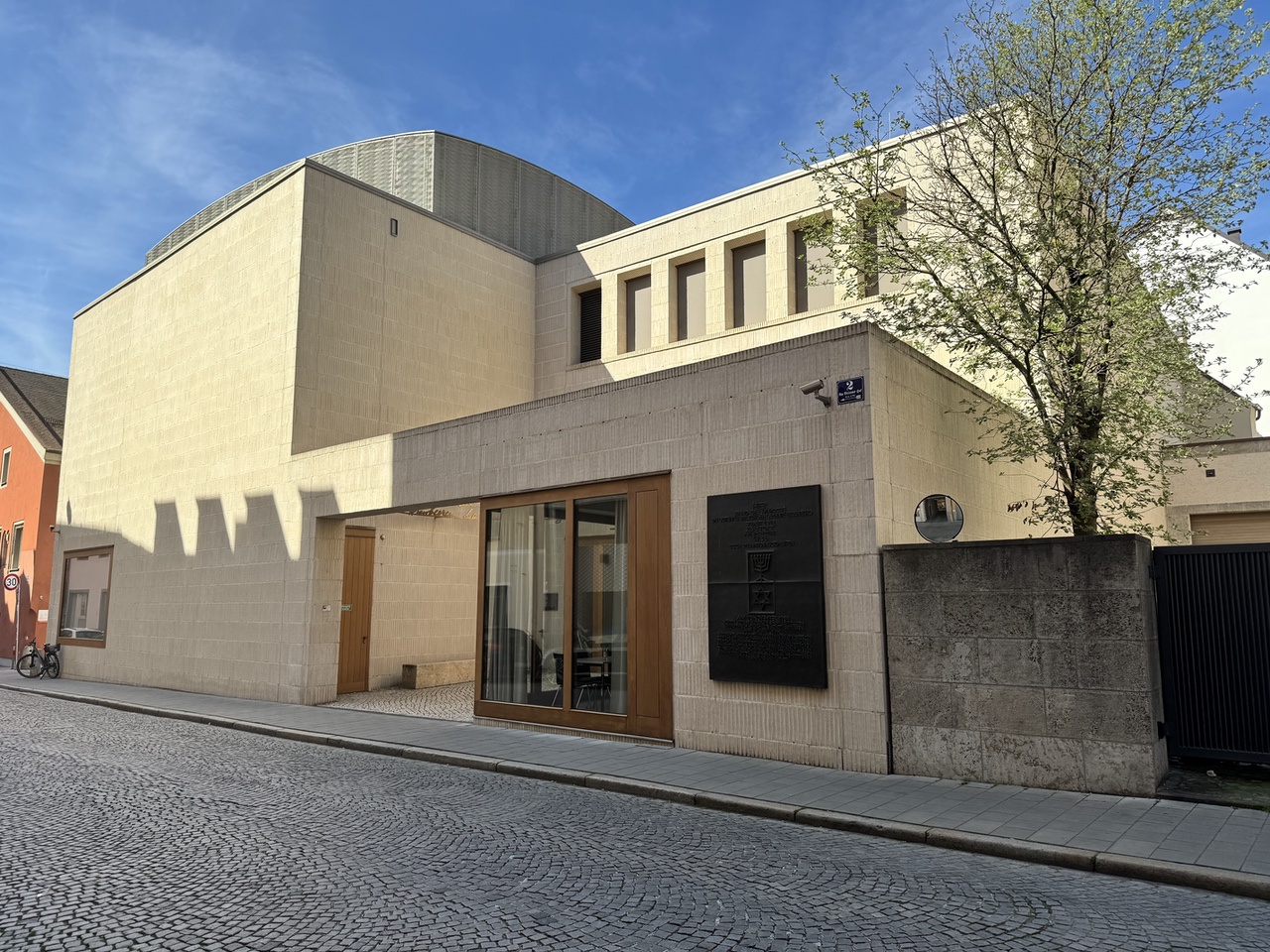
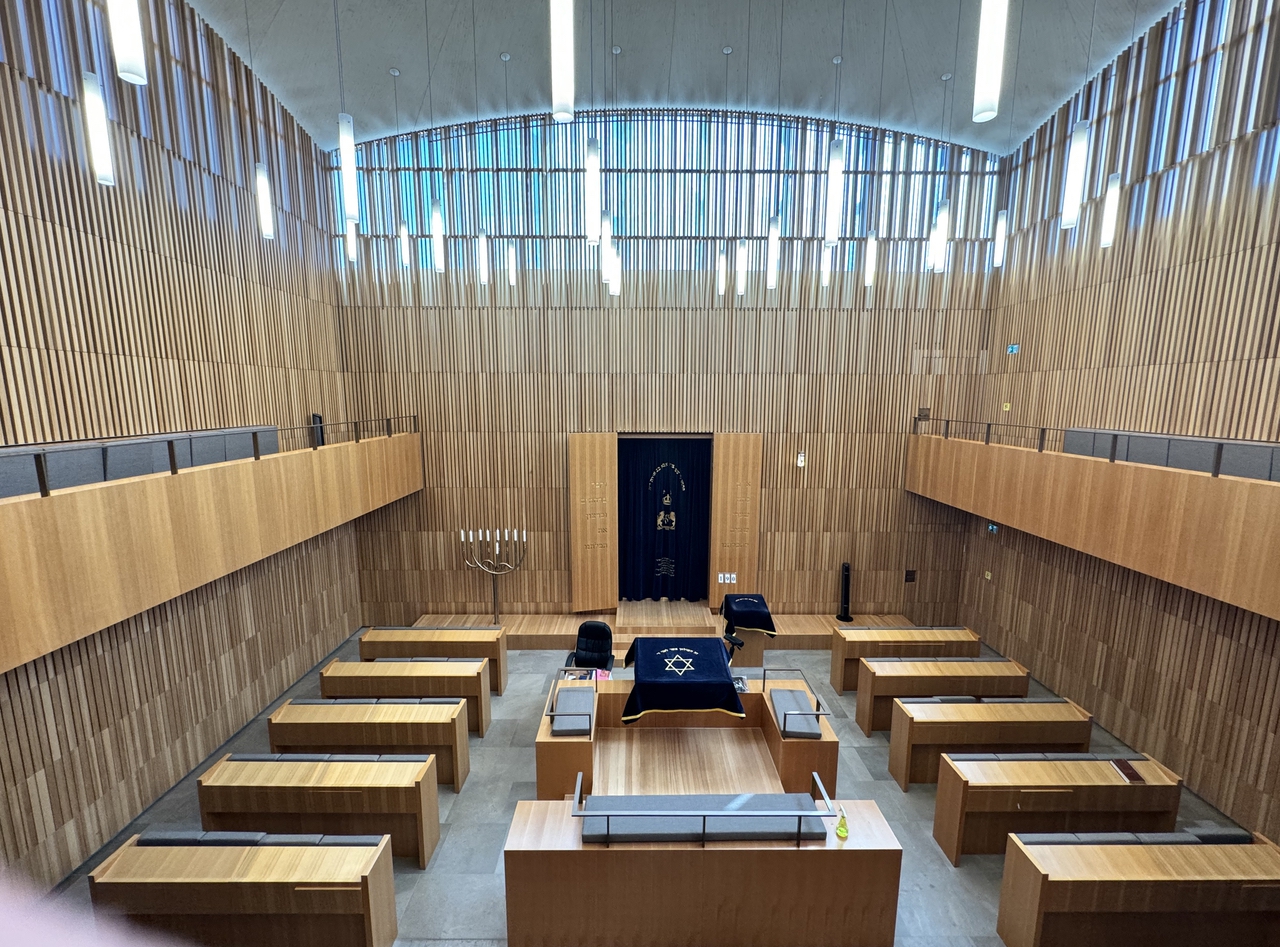
The creation of Neupfarrplatz (plaza) and the construction of the Neupfarrkirche church (originally meant to be Catholic but completed as a Protestant church) tie in directly with the expulsion and subsequent demolition of the Jewish Quarter (and synagogue) in 1519. Israeli artist Dani Karavan retraced its floor plan through a walk-on floor relief made of white concrete, which he named Misrach and which was unveiled on July 13, 2005. The floor plan serves as a sitting area and is in the left foreground of the picture. In the left background is the cathedral.
Neupfarrplatz and the synagogue footprint
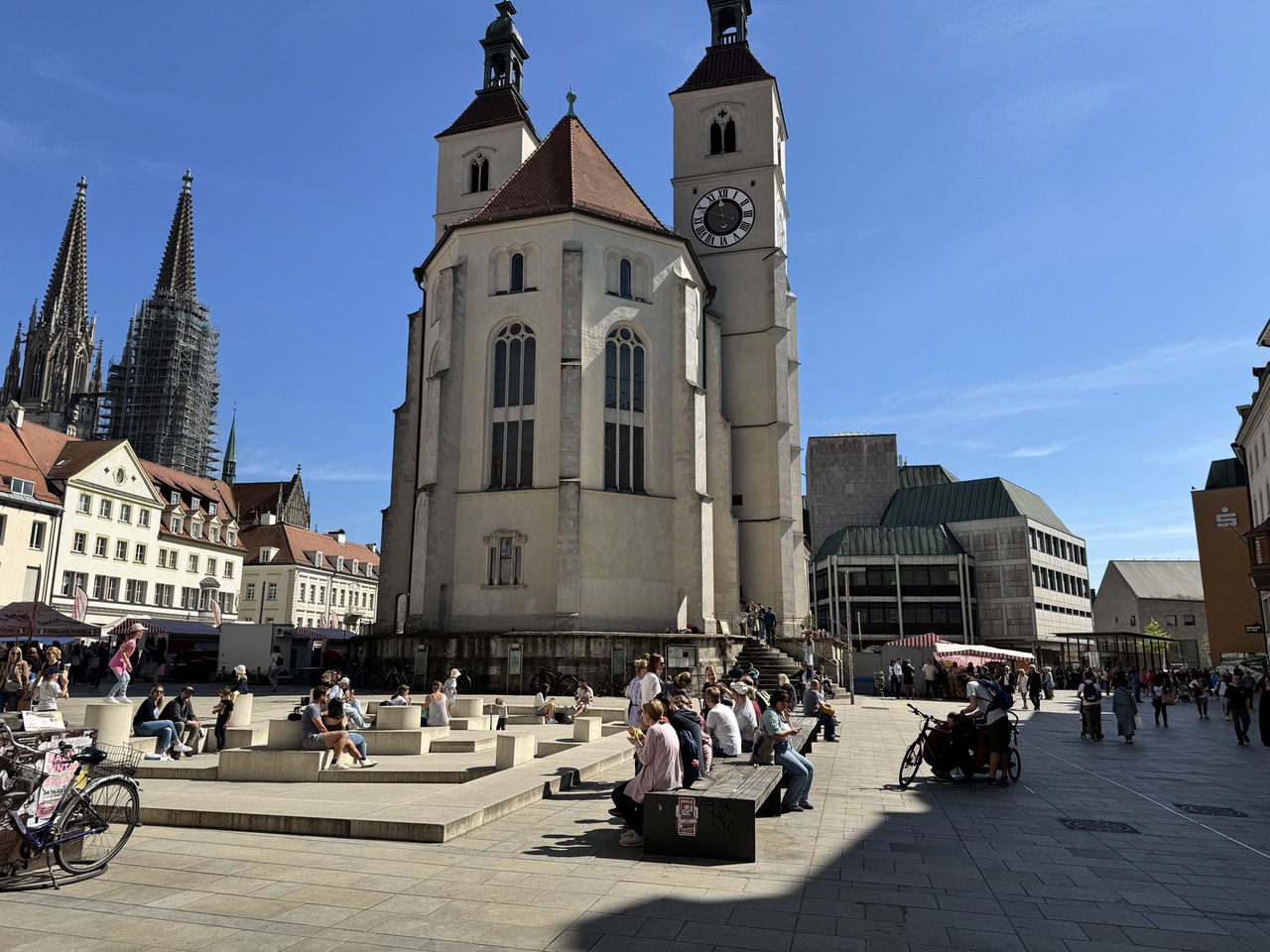
On our way to the Scottish Doorway of St. James’ Church, we walked down this interesting small road.
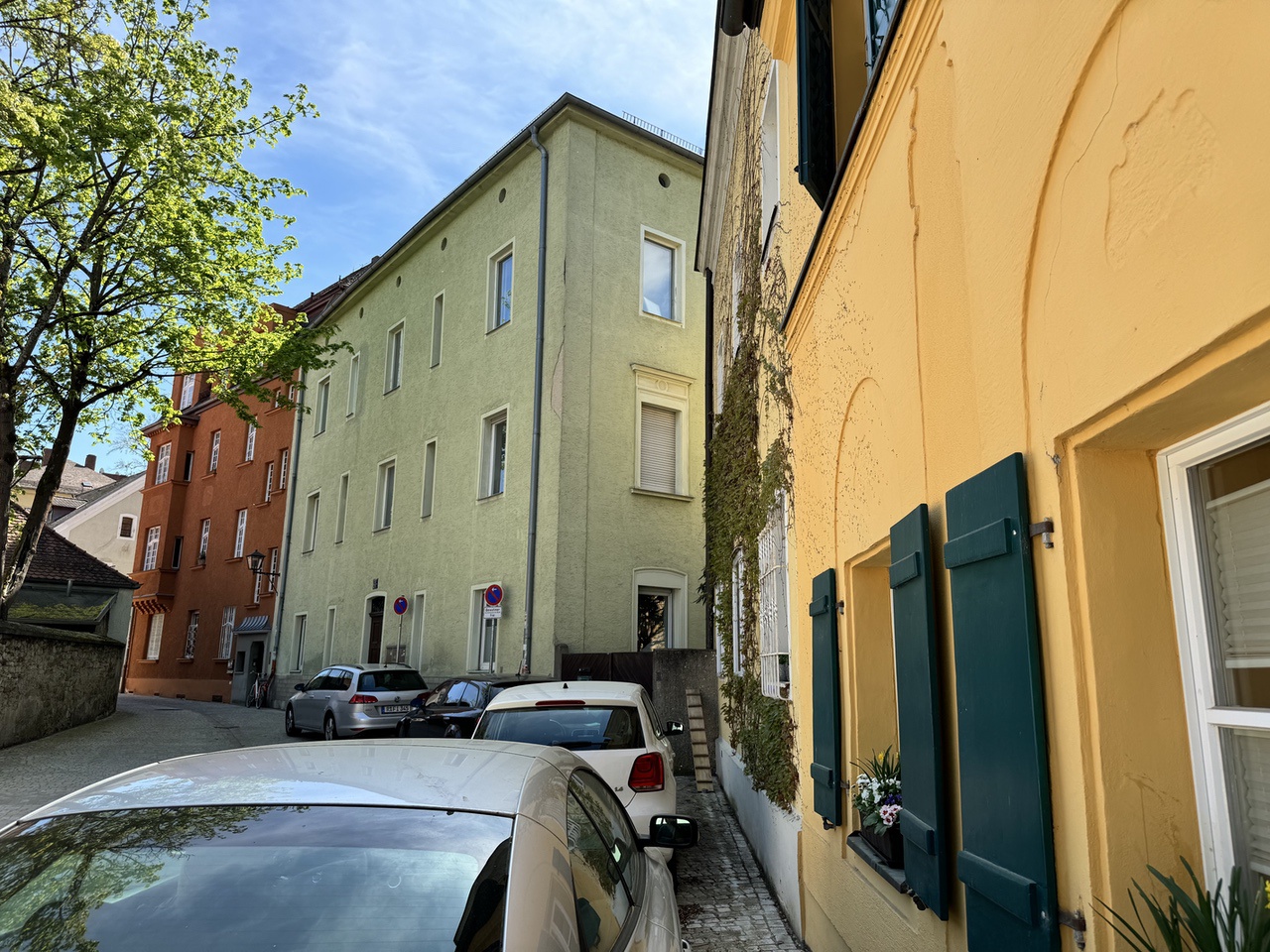
St. James’ is a classic work of High-Romanesque church architecture in southern Germany. Its foundation stone was laid around 1090. The church is famous for its mysterious doorway. Known as the “Schottenpor- tal” or “Scottish doorway”, it is one of the most famous Romanesque monuments in Germany. It is protected from the elements with a glass enclosure.
Scottish doorway
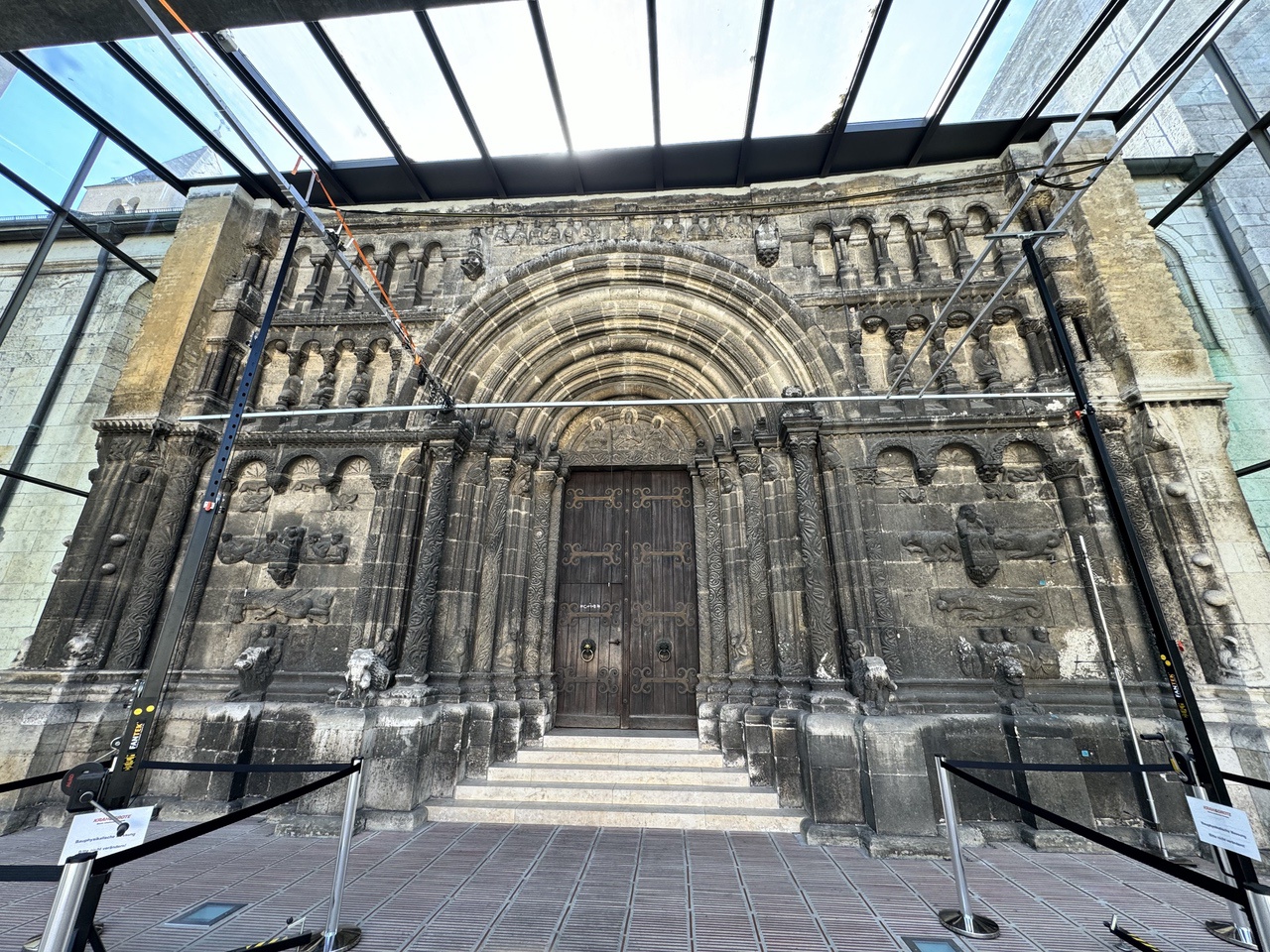
We headed next to the excavated Southeast corner of the Roman Fortress Wall.
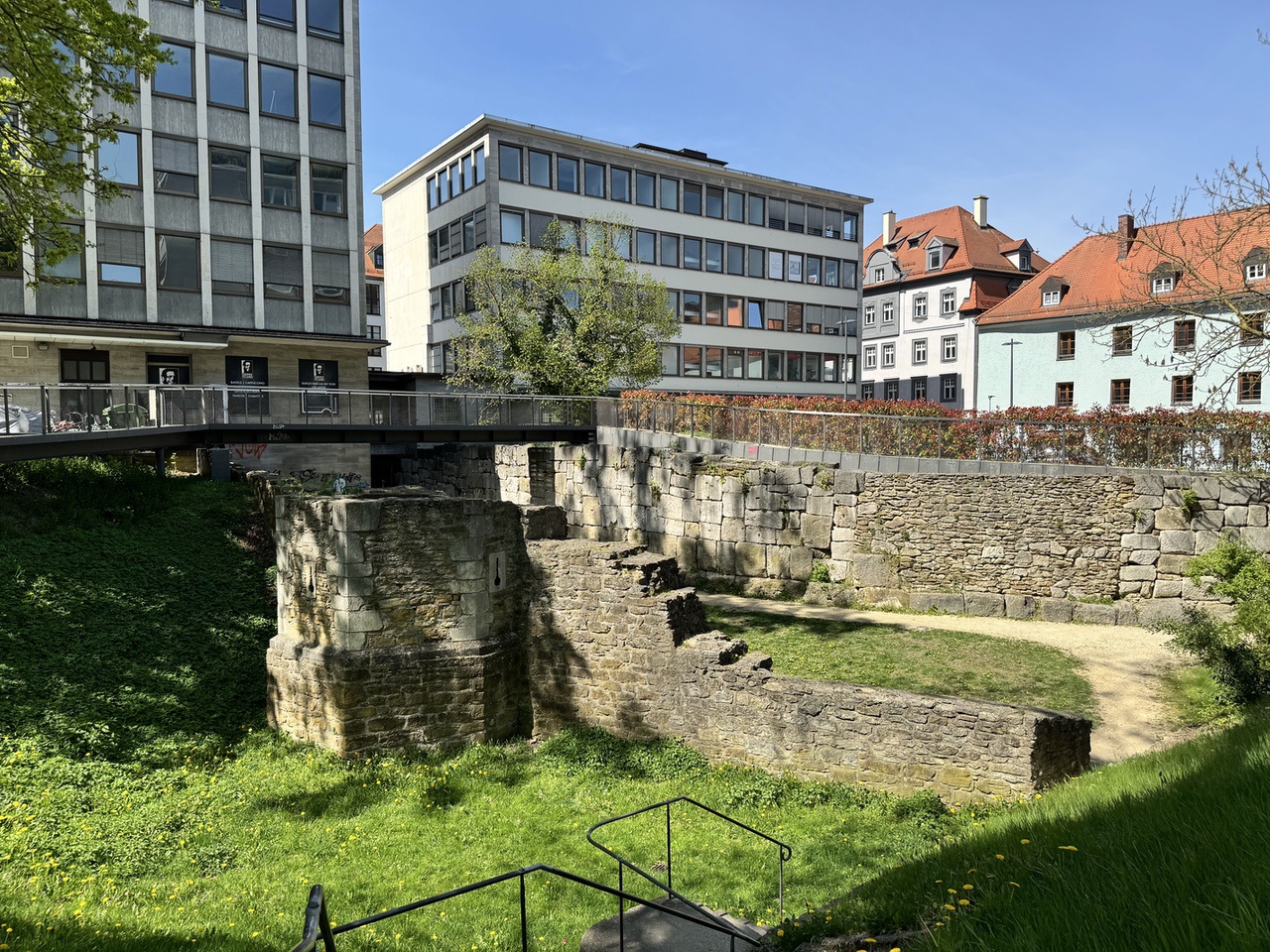
We ate lunch at the historic Wurstkuchl, which has stood on the Danube next to the Steinernes Brücke for over 500 years. Much has remained the same today: the open charcoal grill, the homemade sausage, the sauerkraut from their own fermentation cellar, and the well-known sausage cloth mustard according to the historical recipe of Elsa Schricker.
Wurstkuchl
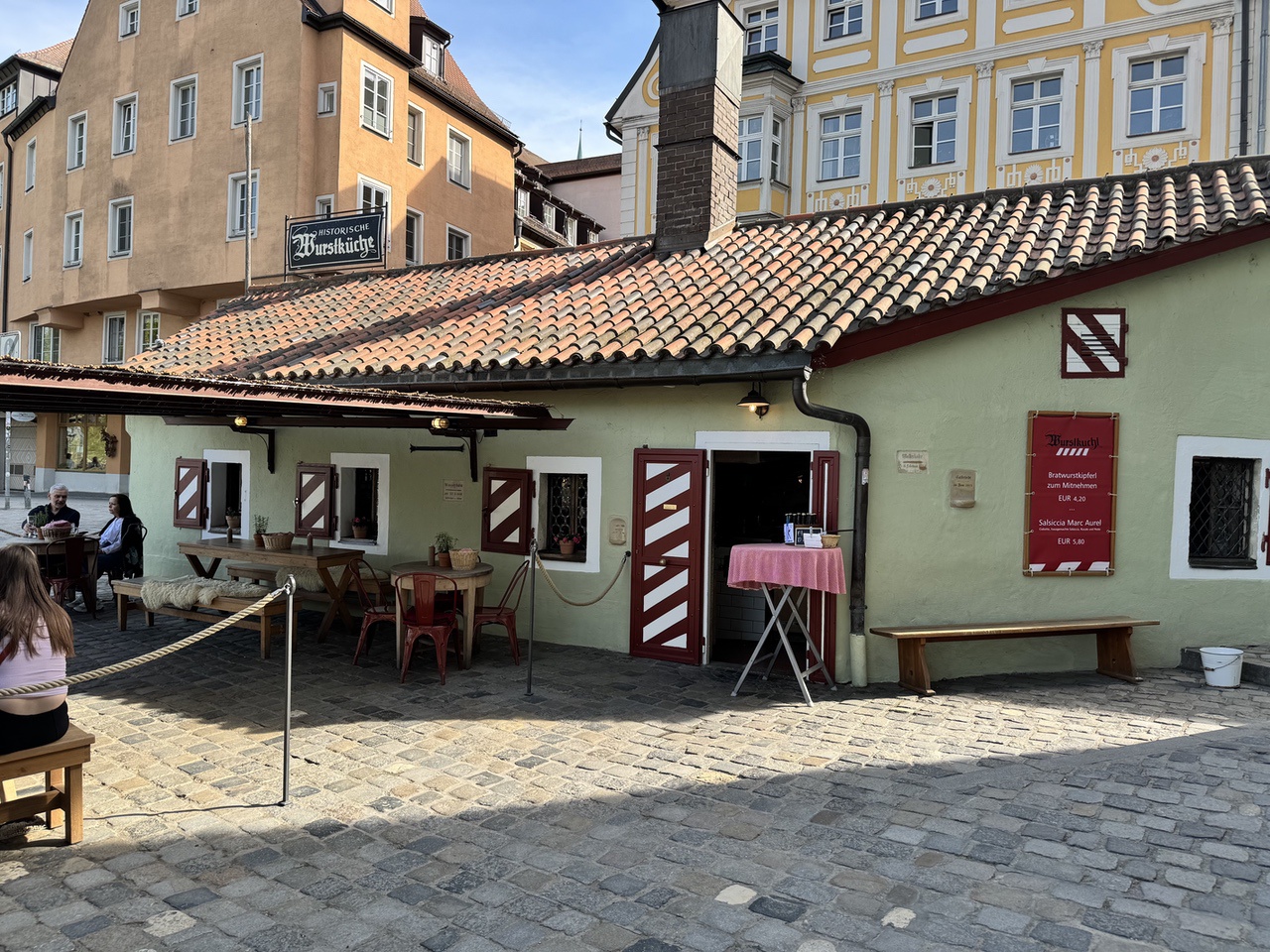
This is a picture from the web of our lunch order. Sauerkraut is SO good here, warm and flavorful.
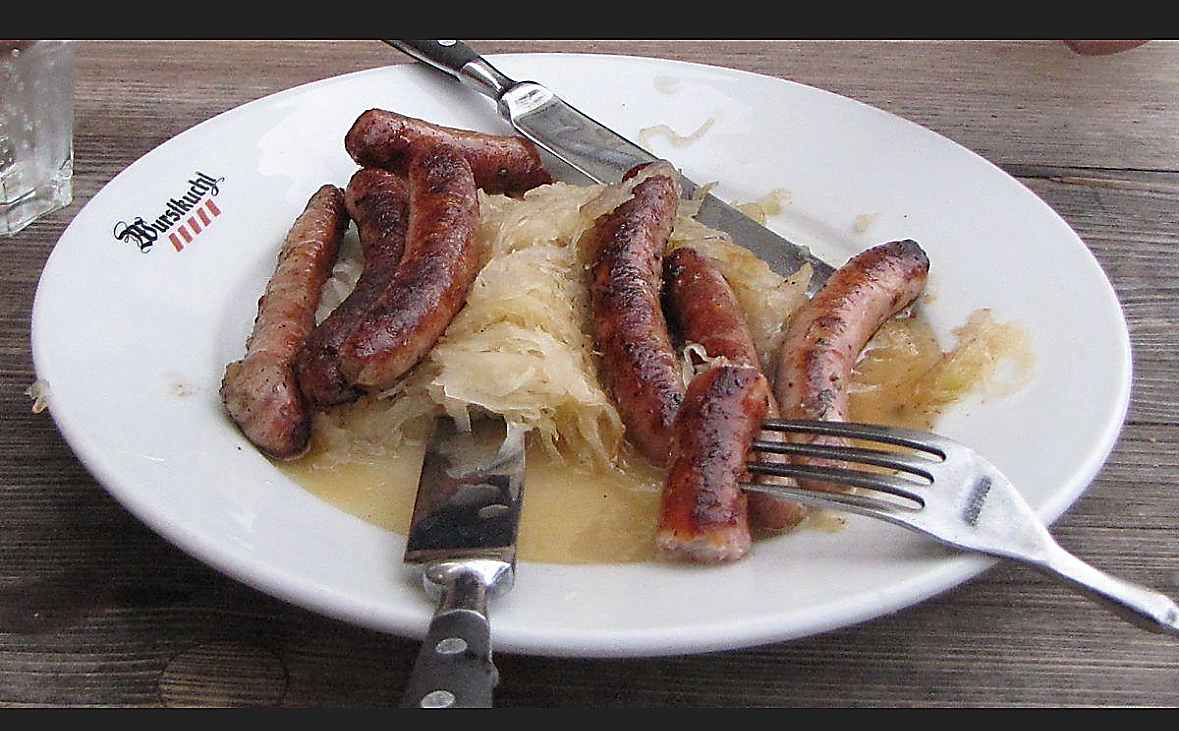
We walked more and eventually headed back to our hotel. We relaxed a bit in the courtyard garden just outside the dining room.
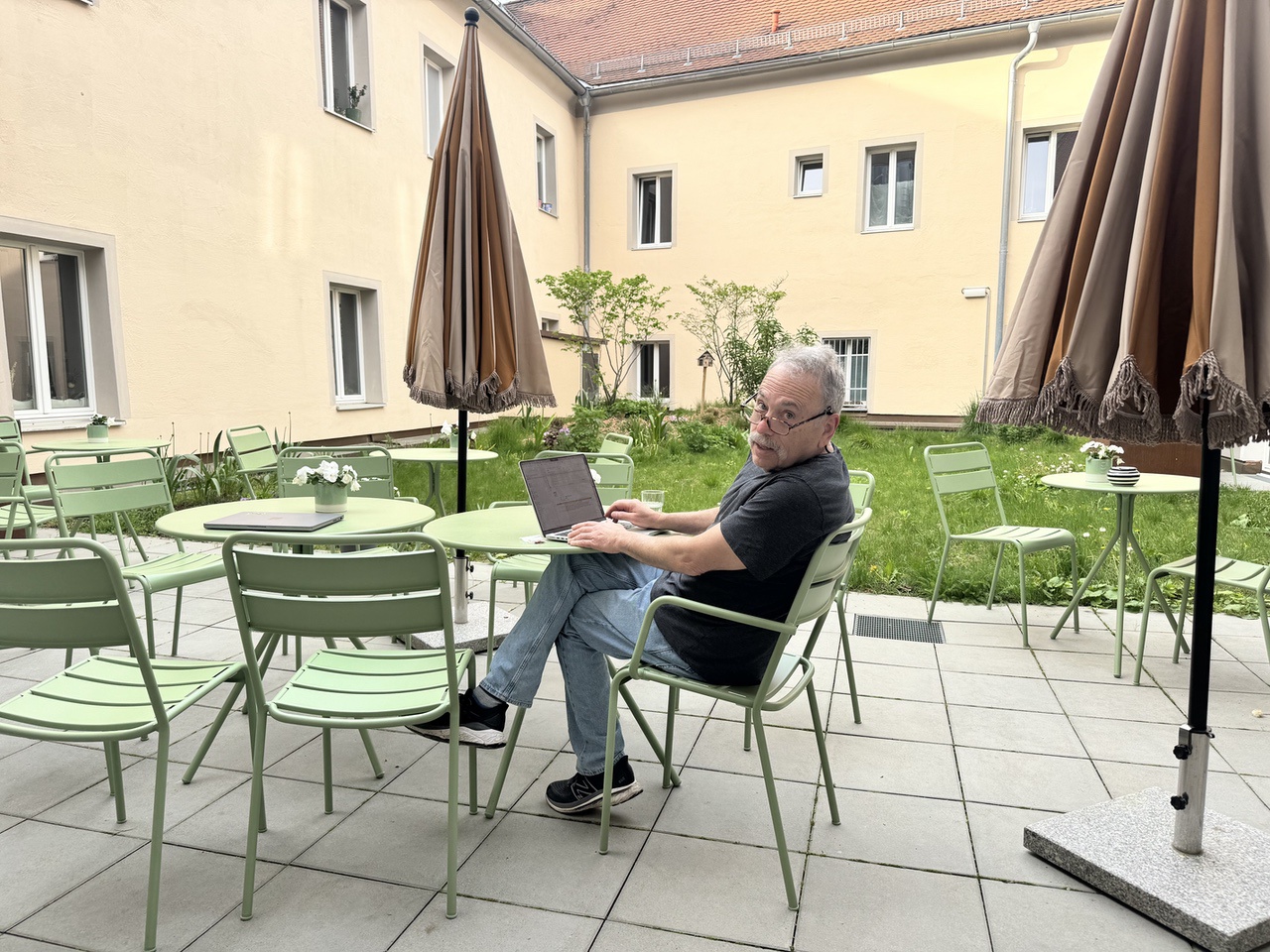
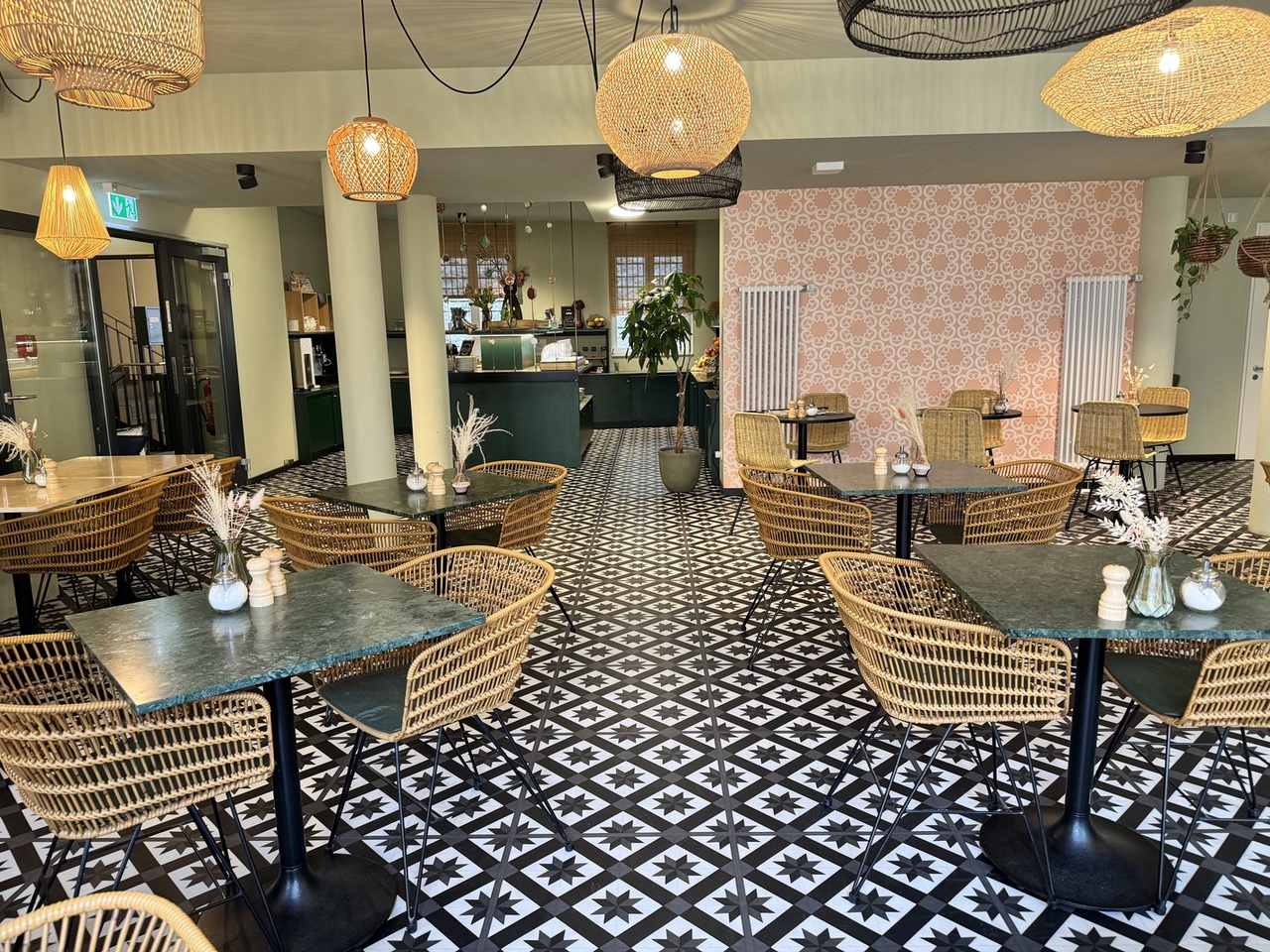
We were so full from our late lunch, we actually just ate peanut butter on Wasa bread we had brought from Munich, with some fruit, and some coffee from the dining room. (Water, coffee, tea, fruit available all the time).
We then headed out for the evening, taking some night shots from the stone bridge and finding one more Roman wall remains (northeast corner) on our way back.
Night shot of the stone bridge
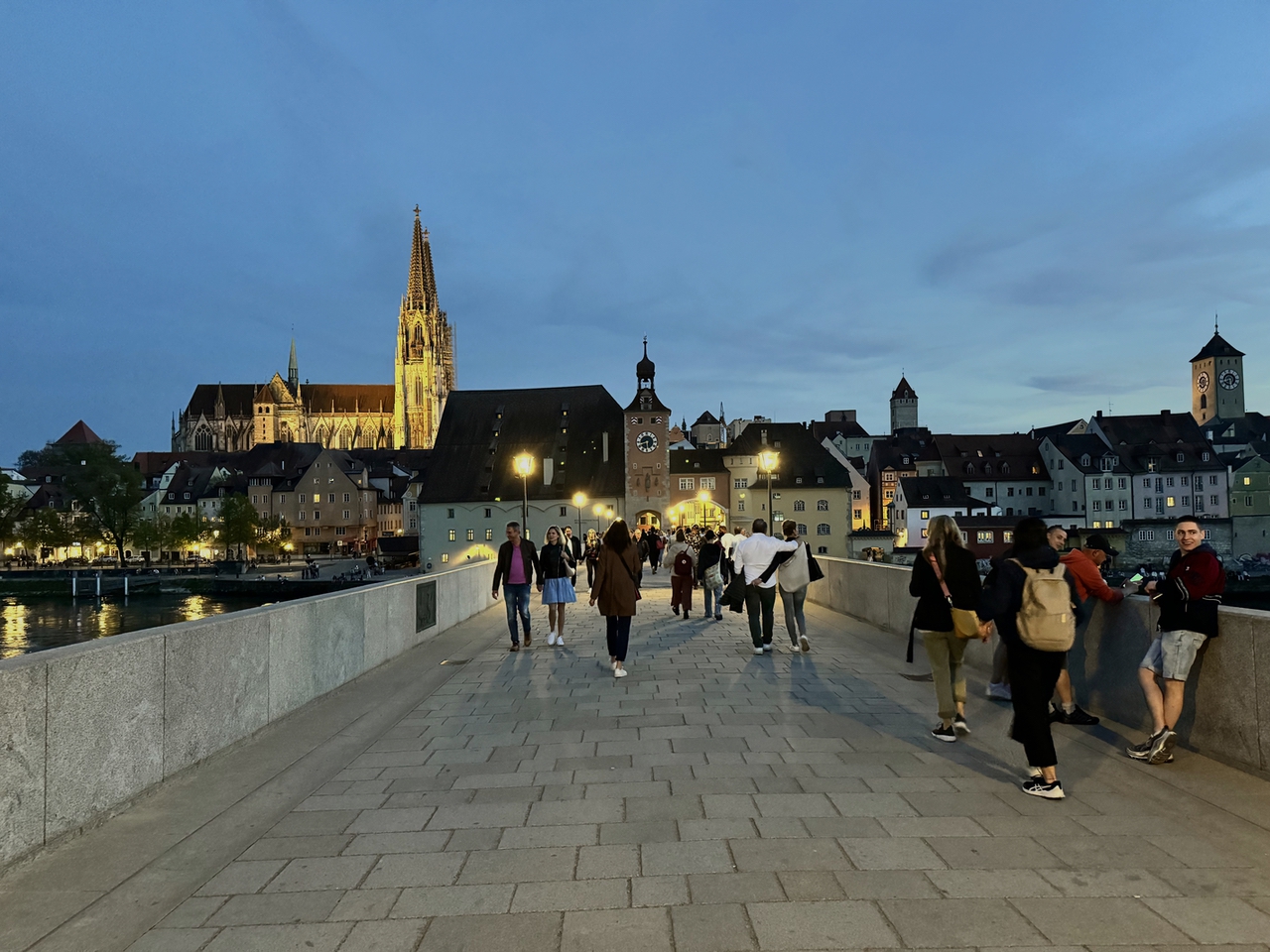
A full day, a good day.
Links
Other posts that refer to this post:
--
Larry and Eileen Samberg












